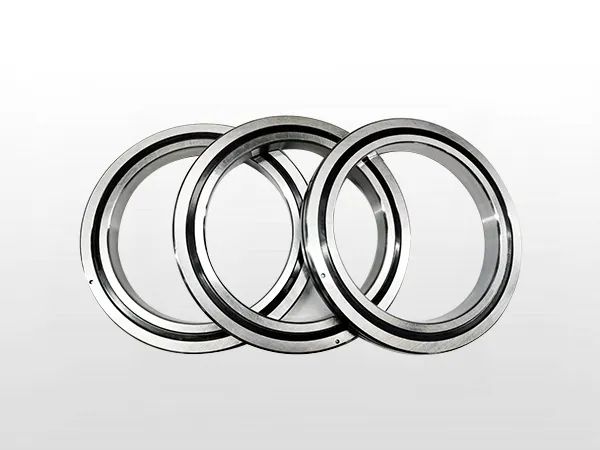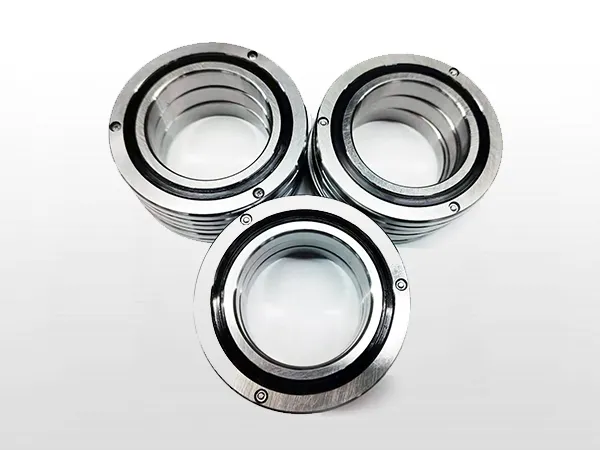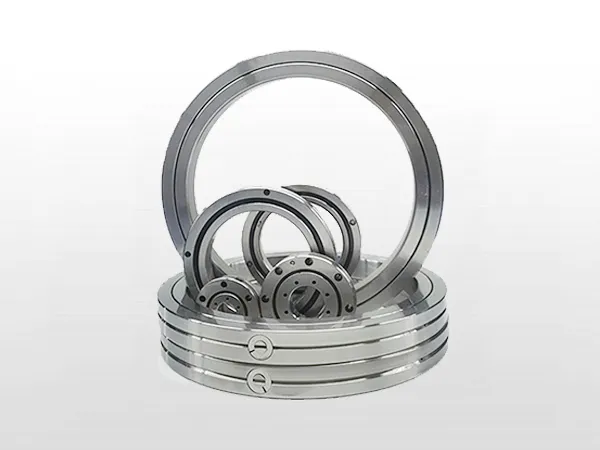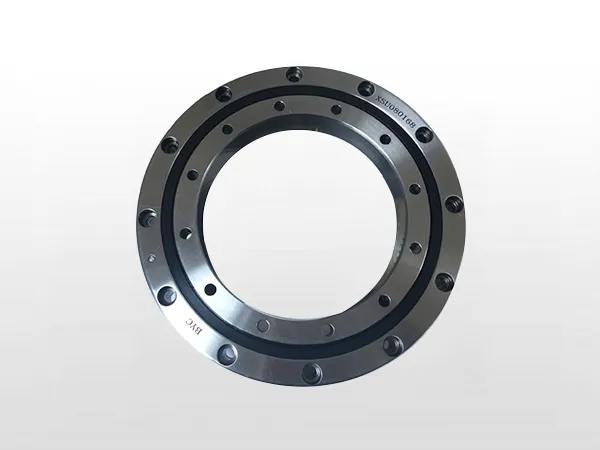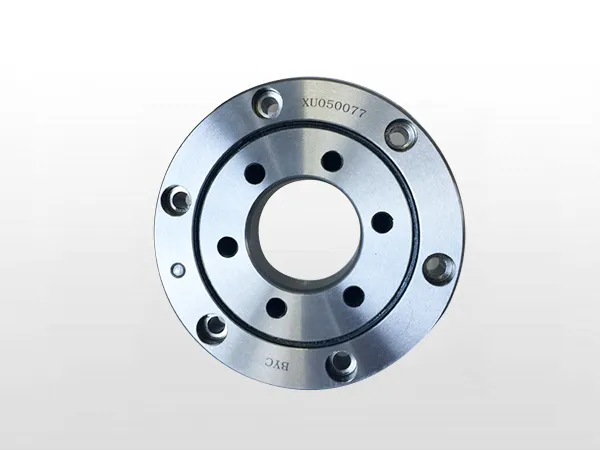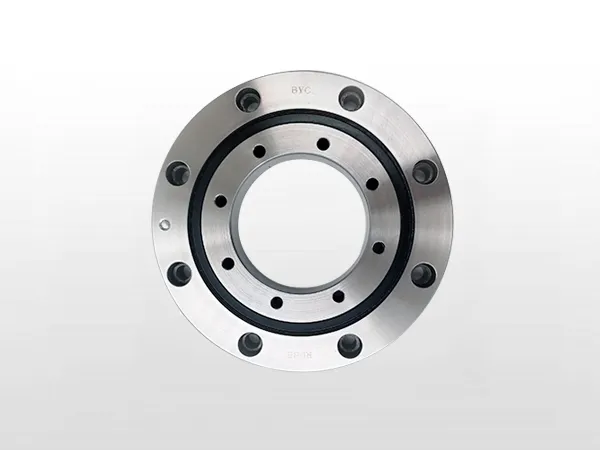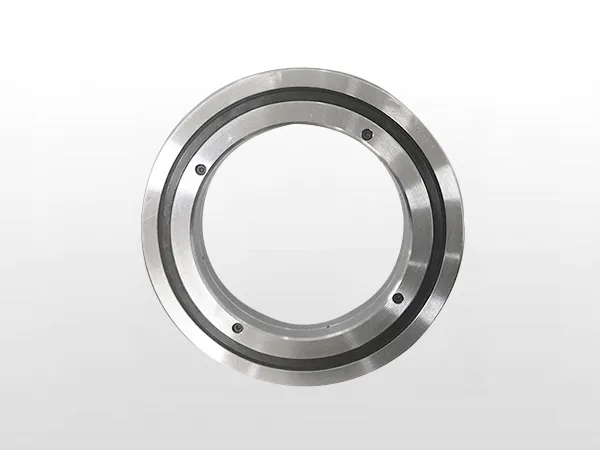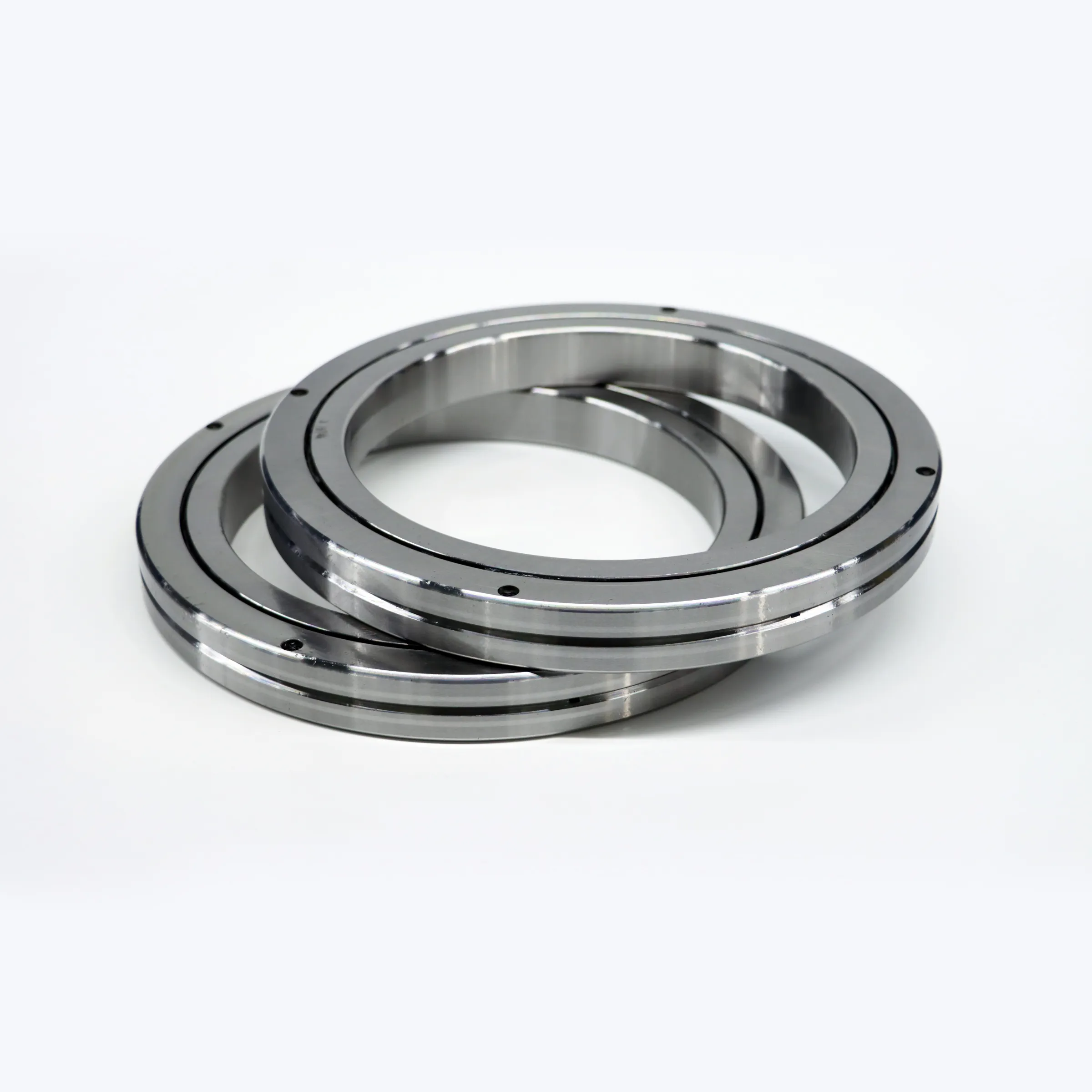Crossed cylindrical roller bearings, also known as crossed roller bearings, are specialized types of rolling-element bearings designed to handle radial, axial, and moment loads simultaneously. They are particularly suitable for applications where high rigidity, accuracy, and compact size are essential. Crossed roller bearings consist of cylindrical rollers that are crossed at a 90-degree angle between inner and outer raceways.
BRA series cross cylindrical roller bearing features
1. High Load Capacity:
Crossed roller bearings can support significant radial, axial, and moment loads due to their crossed roller arrangement, providing high load capacity in a compact design.
2. High Rigidity and Accuracy:
The crossed arrangement of cylindrical rollers ensures high rigidity and accuracy in applications requiring precise positioning and motion control. They are commonly used in machine tools, robots, and industrial automation equipment.
3. Low Friction and Smooth Operation:
These bearings have a small clearance between the rollers and raceways, leading to low friction and smooth rotation even at high speeds. This characteristic is advantageous in applications where smooth and precise movement is essential.
4. Space-Saving Design:
Crossed roller bearings have a slim profile, making them ideal for applications with limited space, such as in robotics and medical devices.
5. Customizable Configurations:
They are available in various configurations, including single-row and double-row designs, with different cross-sectional shapes and sizes, allowing for customization based on specific application requirements.
BRA series cross cylindrical roller bearing installation method
1. Use copper hammer and manual hammer to install
This is an easy way to mount small to medium bearings. When the inner ring of the bearing is tight and the outer ring is relatively loose, stick the copper hammer to the end of the inner ring of the bearing, hit it directly with the hammer, and then use the copper hammer to transmit the force, so that the bearing is slowly installed on the shaft .
When the inner ring of the bearing is very large, you can use a copper hammer to knock evenly around the end of the inner ring of the bearing. Be careful not to beat it just once, and it should not be too heavy. Avoid installing oblique breakdown bearings.
2. Using casing installation
This method is the same as the principle of using a copper hammer to install a bearing. It presses the casing directly on the end surface of the support (when the support is installed on the shaft, it presses the end surface of the inner ring; when it is installed in the shell hole, it presses the end surface of the outer ring), and through the hammer The impact can be evenly on the full ring end face of the installed bearing, and it can work together with the press, saving labor and effort in installation, and stable quality. The bushings used must be soft (could also be copper or low carbon).
When the bearing is installed on the shaft, the inner diameter of the sleeve should be slightly larger than the journal by 1~4 mm, and the outer diameter should be slightly smaller than the diameter of the inner ring of the bearing, or based on the thickness of the sleeve, its thickness should be the thickness of the inner ring of the bearing 2/3~4/5, and both ends of the casing should be flat and perpendicular to the cylinder. When the bearing is installed in the housing bore, the outer diameter of the sleeve is slightly smaller than the outer diameter of the bearing.
3. Press-in method
Installation pressure should be applied directly to the end face of the interference fit bearing ring. The force exerted on the bearing during installation must not be transmitted from one bearing ring to another through rolling elements, otherwise it may cause damage to the raceway. But under no circumstances should you strike the bearing rings, cages, rolling elements or seals directly.
4. Heating installation
For large bearings, adopt the principle of thermal expansion and cold contraction, put the bearings into the water tank, and then fix them with copper hammers, sleeves and hammers to facilitate installation. Usually, the temperature during heating does not exceed 100 degrees Celsius, and 80-90 degrees Celsius is more suitable.
Applications:
-
Robotics: Crossed roller bearings are commonly used in robot joints and arms, enabling precise and smooth motion control in industrial and service robots.
-
Machine Tools: These bearings find applications in precision rotary tables, indexing heads, and spindles in machining centers, ensuring accurate positioning and machining operations.
-
Medical Equipment: Crossed roller bearings are used in medical imaging devices, surgical robots, and other medical equipment requiring high precision and compact design.
-
Aerospace and Defense: They are utilized in various aerospace applications, including radar systems, missile guidance systems, and satellite components, where precision and reliability are critical.
-
Industrial Automation: Crossed roller bearings are employed in pick-and-place machines, packaging equipment, and linear motion systems to achieve precise and reliable automation processes.
The correct installation should be that its seat ring can adjust the rolling of the rollers by itself to ensure that the rollers are in the upper and lower raceways. In addition, there should be a gap of 0.2~0.5 mm between the bearing seat ring and the bearing seat hole, which is used to compensate the error caused by inaccurate processing and installation. When the center of the bearing sleeve is displaced during operation, it can ensure its automatic adjustment. Prevent bumps and friction to ensure it works properly. Otherwise, serious bearing damage will result. It should be noted that for bearing rings with clearance fit, it is recommended to coat a layer of anti-creep corrosion agent on the mating surface to prevent frictional corrosion on the surface.
